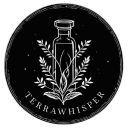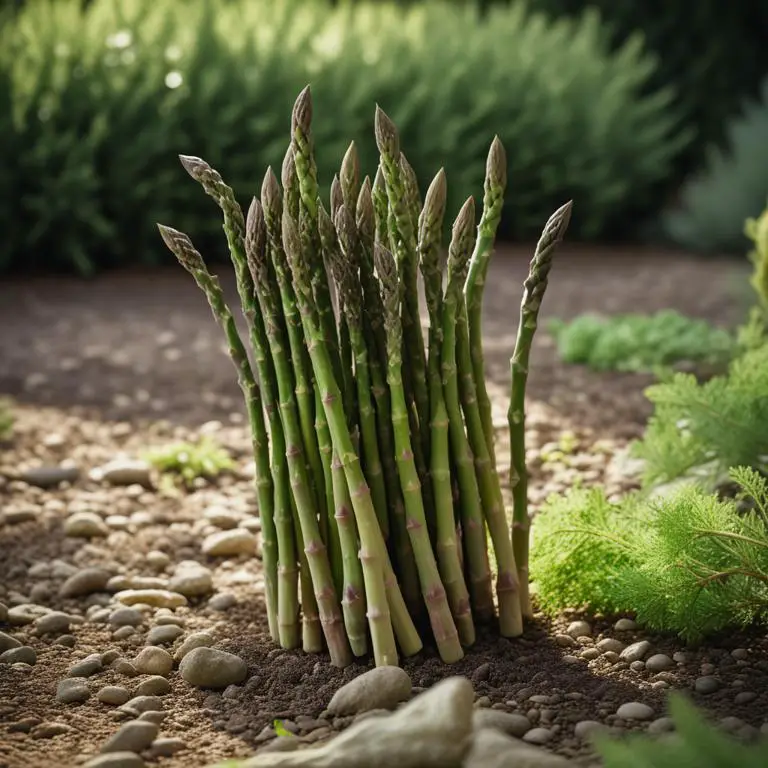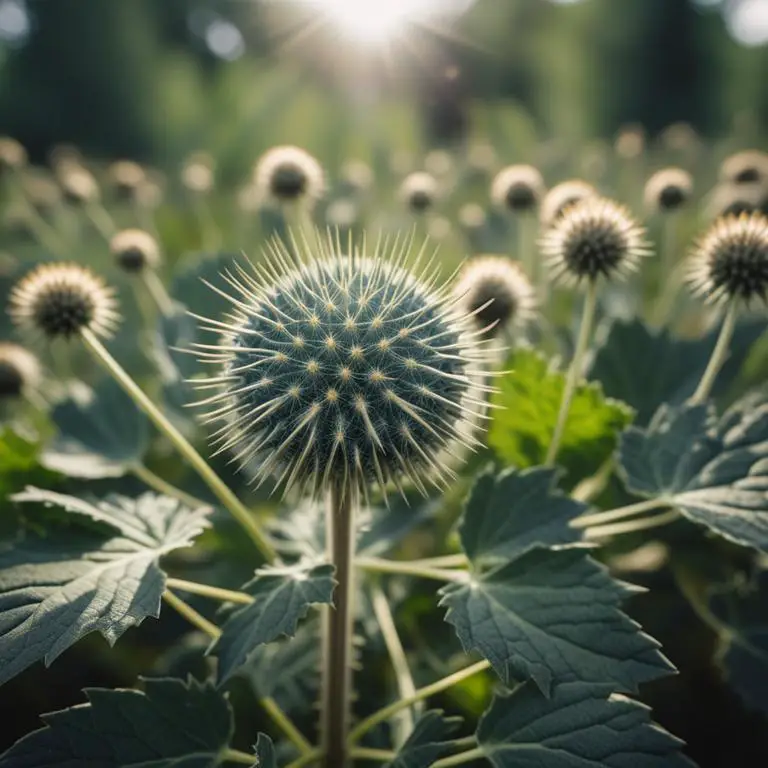
By Leen Randell
Updated: Oct 21, 2024
What to know about Rheum rhabarbarum before using it medicinally
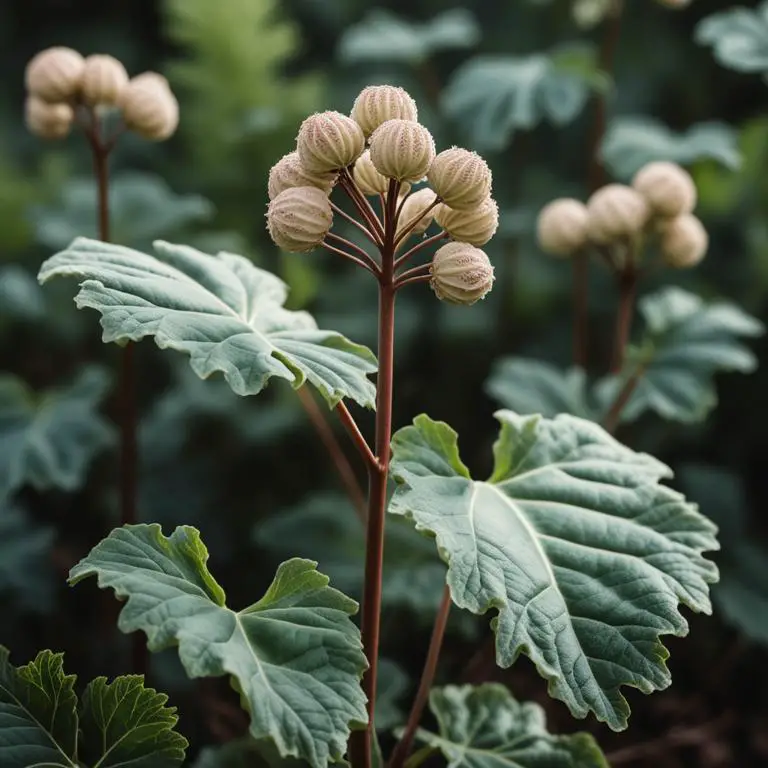
Rheum rhabarbarum, commonly known as rhubarb, is a medicinal herb used to treat various health conditions, including gastrointestinal disorders such as constipation, diarrhea, and inflammatory bowel disease.
The herb is valued for its anti-inflammatory, antibacterial, and antioxidant properties, which contribute to its main health benefits of reducing inflammation, promoting digestion, and supporting the immune system. The therapeutic properties of Rheum rhabarbarum are attributed to its ability to modulate the gut microbiome, reduce oxidative stress, and exhibit laxative and anti-emetic effects. The bioactive compounds present in the herb include anthraquinones, such as emodin and rhein, which are responsible for its medicinal properties.
Traditionally, people prepare an herbal decoction by infusing the roots and rhizomes of Rheum rhabarbarum in hot water to create a treatment for digestive issues and other health conditions.
Featured Study:
According to a study published by "Advances in experimental medicine and biology", Rheum rhabarbarum has been attributed to various medicinal effects, including the treatment of lung, liver, kidney, womb, and bladder diseases, as well as cancer, diabetes, and digestive issues such as diarrhea and constipation. The plant has also shown potential in treating insect bites and relapsing fevers. Additionally, Rheum rhabarbarum may offer relief from digestive issues, indicating its potential in promoting overall health and well-being.
The following article explains in detail what are the medicinal uses of Rheum rhabarbarum, its health benefits, therapeutic properties, bioactive compounds, used parts, and herbal preparation. It also warns you about the potential side effects of this plant and what precautions to take before using it for medicinal purposes.
ARTICLE SUMMARY: The table below summarizes the most crucial information about Rheum rhabarbarum provided in the article below, which is useful if you are in a hurry and don't have time to dig deep into the very detailed content that follows.
| Medicinal Aspect | Summary |
|---|---|
| Uses | Constipation, Diarrhea, Indigestion, Inflammation, Arthritis, Gastritis, Gastroenteritis, Ulcers, Digestive issues, Gout |
| Benefits | Reduces inflammation, Regulates blood sugar, Lowers blood pressure, Relieves digestive issues, Fights cancer cells, Supports healthy bones, Improves heart health, Boosts immune system, Reduces menstrual pains, Cures skin conditions |
| Properties | Antimicrobial, Antioxidant, Anti-inflammatory, Diuretic, Antidiabetic, Antispasmodic |
| Constituents | Saponins, Phenolic acids, Flavonoids, Anthocyanins, Triterpenoids, Glycosides, Coumarins, Tannins, Anthraquinones, Alkaloids |
| Parts | Leaves, Rhizomes, Roots |
| Preparations | Tincture, Decoction, Salve, Tea, Capsule |
| Side Effects | Abnormal heart rhythms, Allergic reactions, Bleeding, Bradycardia, Diarrhea, Electrolyte imbalance, Gastrointestinal upset, Hypokalemia, Nausea, Vomiting |
| Precaution | Consult a qualified herbalist or healthcare professional, Use in moderation and under medical supervision, Avoid during pregnancy and breastfeeding, Monitor blood sugar levels, Interact with medications such as diuretics and blood thinners, Be cautious with kidney or liver disease, Watch for allergic reactions, Avoid with hypoglycemia or low blood sugar, Store in a cool, dry place to preserve potency, Follow proper preparation and dosing instructions |
BONUS CHEATSHEET: The cheatsheet below illustrates the most important medicinal aspects of Rheum rhabarbarum. Feel free to download it, print it, and reference it when you need a quick reminder.
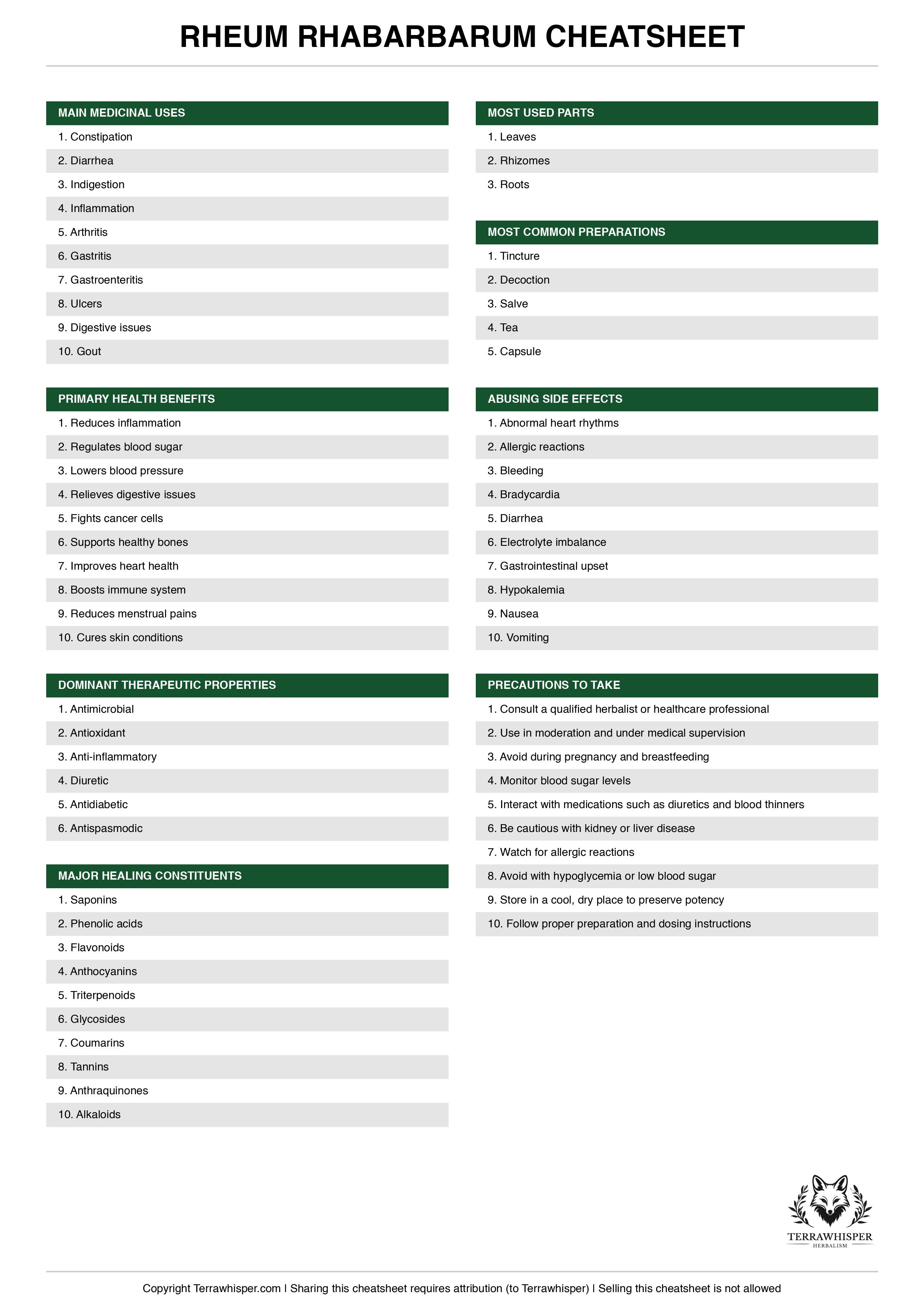
- What are the main medicinal uses of Rheum rhabarbarum?
- Modern Western Medicine
- Traditional Chinese Medicine
- Ayurvedic Medicine
- Unani Medicine
- Homeopathic Medicine
- What are the primary health benefits of Rheum rhabarbarum?
- Circulatory System
- Digestive System
- Endocrine System
- Integumentary System
- Lymphatic System
- Musculoskeletal System
- Nervous System
- Reproductive System
- Respiratory System
- Urinary System
- What are the dominant therapeutic properties of Rheum rhabarbarum?
- What are the major healing constituents of Rheum rhabarbarum?
- What are the most used parts of Rheum rhabarbarum in medicine?
- What are the most common medicinal preparations of Rheum rhabarbarum?
- What are the possible side effects of Rheum rhabarbarum if used improperly?
- What are the precautions to take before using Rheum rhabarbarum medicinally?
- Are there scientific studies that prove the medical effectiveness of Rheum rhabarbarum?
- Related herbs to Rheum rhabarbarum?
What are the main medicinal uses of Rheum rhabarbarum?
The main medicinal uses of Rheum rhabarbarum are treating diarrhea due to its prebiotic properties that promote the growth of beneficial gut bacteria, relieving constipation by stimulating intestinal contractions and improving bowel movements.
Rheum rhabarbarum also alleviates digestive issues and indigestion by reducing inflammation and increasing the production of digestive enzymes. Furthermore, it helps to calm colic symptoms in infants by soothing the intestinal muscles and reducing spasms. Rheum rhabarbarum is also used to reduce fever through its diaphoretic properties, which cause sweating and promote the expulsion of toxins.
Additionally, it is employed to treat gastritis and gastroenteritis by protecting the stomach lining and inhibiting the growth of harmful bacteria, as well as to alleviate dyspepsia and inflammation in the gastrointestinal tract.
The following illustration give a summary of the main medicinal uses of Rheum rhabarbarum.
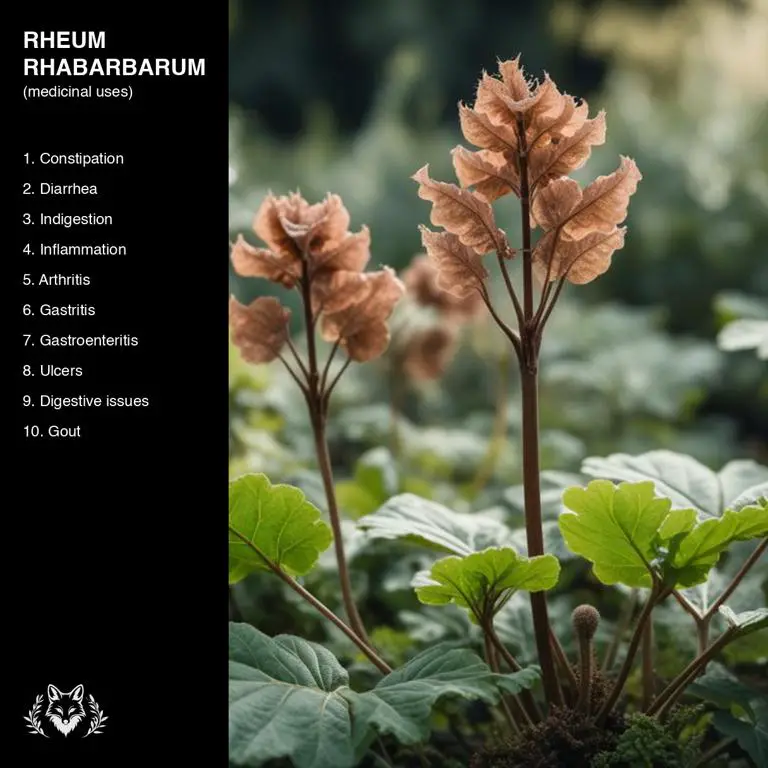
The list below provide more details on why Rheum rhabarbarum is used to alleviate the health conditions mentioned in the illustration above.
- Constipation: Its high content of dietary fiber helps to soften stool and stimulate bowel movements, promoting regularity and relief from constipation.
- Diarrhea: Its prebiotic properties help to balance gut bacteria, which can become disrupted during episodes of diarrhea, reducing the severity and duration of symptoms.
- Indigestion: Its anti-inflammatory properties and high content of antioxidants help to soothe and protect the digestive tract, reducing inflammation and discomfort associated with indigestion.
- Inflammation: Its anti-inflammatory compounds, including anthraquinones and flavonoids, help to reduce inflammation and promote healing in the body, alleviating symptoms of conditions such as arthritis.
- Arthritis: Its anti-inflammatory compounds, including anthraquinones and flavonoids, help to reduce inflammation and pain in joints, reducing the severity of symptoms associated with arthritis.
- Gastritis: Its anti-inflammatory properties and high content of antioxidants help to soothe and protect the stomach lining, reducing inflammation and discomfort associated with gastritis.
- Gastroenteritis: Its prebiotic properties help to balance gut bacteria, which can become disrupted during episodes of gastroenteritis, reducing the severity and duration of symptoms.
- Ulcers: Its anti-inflammatory compounds, including anthraquinones and flavonoids, help to reduce inflammation and promote healing in the stomach lining, alleviating symptoms of ulcers.
- Digestive Issues: Its high content of dietary fiber, anti-inflammatory compounds, and prebiotic properties help to soothe, protect, and regulate the digestive system, promoting overall digestive health.
- Gout: Its anti-inflammatory compounds, including anthraquinones and flavonoids, help to reduce inflammation and pain in joints, reducing the severity of symptoms associated with gout.
The table that follows gives an overview of what are the most common health conditions that are treated with Rheum rhabarbarum, in each of the major medicinal systems.
| Medicinal System | Conditions Treated |
|---|---|
| Modern Western Medicine | Constipation, Diarrhea, Inflammation, Gastritis, Digestive Issues, Arthritis, Indigestion, Irritable Bowel Syndrome, Gastroenteritis, Diabetes, Inflammatory Bowel Disease, Ulcers, Bloating, Kidney Stones, Hemorrhoids, Gastroesophageal Reflux, Gout, Menstrual Cramps, Skin Irritation, Ulcerative Colitis |
| Traditional Chinese Medicine | Constipation, Diarrhea, Indigestion, Gastroenteritis, Inflammation, Gastritis, Arthritis, Colic, Digestive Issues, Gastroesophageal Reflux, Bloating, Urinary Tract Infections, Nausea, Menstrual Cramps, Sore Throat, Abdominal Pain, Vomiting, Fever, Stomach Ulcers, Ulcers |
| Ayurvedic Medicine | Constipation, Diarrhea, Arthritis, Inflammation, Indigestion, Gastritis, Ulcers, Diabetes, Gout, Digestive Issues, Rheumatism, Gastroenteritis, Colic, Menstrual Cramps, Cough, Fever, Eczema, Hemorrhoids, Dyspepsia, Nausea |
| Unani Medicine | Diarrhea, Constipation, Indigestion, Inflammation, Gastritis, Arthritis, Digestive Issues, Flatulence, Gout, Hemorrhoids, Urinary Tract Infections, Bloating, Nausea, Colic, Kidney Stones, High Blood Pressure, Fever, Vomiting, Gastroenteritis, Menstrual Cramps |
| Homeopathic Medicine | Diarrhea, Constipation, Indigestion, Inflammation, Arthritis, Stomach Ulcers, Nausea, Gastroenteritis, Gastritis, Menstrual Cramps, Colic, Gout, Bloating, Flatulence, Digestive Issues, Skin Irritation, Kidney Stones, Urinary Tract Infections, Vomiting, Gastroesophageal Reflux |
Modern Western Medicine
In modern western medicine, Rheum rhabarbarum is used to treat constipation, alleviating hard and dry stools by stimulating bowel movements and improving gut motility.
Additionally, it has been found to effectively manage diarrhea by regulating fluid and electrolyte balance in the intestines, thereby preventing dehydration and electrolyte imbalances. The plant's anti-inflammatory properties also make it a useful treatment for inflammation, reducing swelling and pain in the body. Furthermore, Rheum rhabarbarum has been used to treat gastritis, a condition characterized by inflammation of the stomach lining, by reducing acid secretion and promoting healing.
It is also used to treat digestive issues, such as indigestion, by relaxing the muscles in the stomach and improving digestion, and is effective in managing irritable bowel syndrome, a chronic condition characterized by abdominal pain and changes in bowel movements.
Traditional Chinese Medicine
In traditional chinese medicine, Rheum rhabarbarum is used to treat various health conditions.
Rheum rhabarbarum's laxative properties make it effective in alleviating constipation, a common issue in traditional chinese medicine. Diarrhea and indigestion are also treated with Rheum rhabarbarbarum due to its ability to balance the body's digestive system, while its anti-inflammatory properties help in the treatment of gastroenteritis and inflammation. Rheum rhabarbarbarum is also used to alleviate gastritis and arthritis, as well as to treat colic and digestive issues in traditional chinese medicine, and its natural remedies have been found effective in treating gastroesophageal reflux and bloating.
Furthermore, Rheum rhabarbarbarum has been found to be effective in treating urinary tract infections, nausea, menstrual cramps, sore throat, abdominal pain, vomiting, fever, stomach ulcers, and ulcers.
Ayurvedic Medicine
In ayurvedic medicine, Rheum rhabarbarum is used to treat various health conditions.
Rheum rhabarbarum is particularly effective in managing constipation, regulating bowel movements, and promoting a healthy digestive system. The plant's anti-inflammatory properties also make it a valuable remedy for arthritis, reducing joint pain and swelling. Additionally, Rheum rhabarbarum has been found to alleviate digestive issues, such as indigestion, gastritis, and ulcers, by balancing the body's digestive fire and promoting the growth of beneficial gut bacteria.
Rheum rhabarbarum has also been traditionally used to treat diabetes, gout, colic, menstrual cramps, cough, fever, eczema, hemorrhoids, dyspepsia, and nausea, as well as inflammation, rheumatism, and gastroenteritis, while also serving as a natural remedy for ulcers and digestive issues.
Unani Medicine
In unani medicine, Rheum rhabarbarum is used to treat a variety of health conditions, including diarrhea, which is alleviated by its emollient and astringent properties that help to reduce the frequency of bowel movements.
The plant is also used to treat digestive issues such as indigestion, gastritis, and inflammation of the gastrointestinal tract, which are managed through its anti-inflammatory and antioxidant effects. Additionally, Rheum rhabarbarbarum is employed to address symptoms of arthritis, gout, hemorrhoids, and high blood pressure, as well as to alleviate conditions like constipation, flatulence, and bloating. Furthermore, its antiseptic and antimicrobial properties make it useful in treating urinary tract infections, nausea, vomiting, colic, fever, and gastroenteritis, while its analgesic and antispasmodic properties help to relieve menstrual cramps and kidney stones.
Rheum rhabarbarum is also used to treat kidney stones and is sometimes employed in the management of low-grade fever and vomiting associated with these conditions.
Homeopathic Medicine
In homeopathic medicine, Rheum rhabarbarum is used to treat various health conditions, primarily focusing on gastrointestinal issues such as diarrhea, constipation, and indigestion.
It's also employed to alleviate inflammation and joint pain associated with arthritis, as well as stomach ulcers and nausea. Rheum rhabarbarbarum is effective in treating gastroenteritis, gastritis, and menstrual cramps, and is often used to relieve colic and gout symptoms. Additionally, it helps to alleviate bloating, flatulence, and digestive issues, while also addressing skin irritation and kidney stones.
Furthermore, it's used to treat urinary tract infections, vomiting, and gastroesophageal reflux.
What are the primary health benefits of Rheum rhabarbarum?
Rheum rhabarbarum reduces inflammation by inhibiting pro-inflammatory enzymes and cytokines.
Rheum rhabarbarum regulates blood sugar by increasing insulin sensitivity and glucose uptake in cells. Rheum rhabarbarum lowers blood pressure by blocking the renin-angiotensin system and vasopressin receptors, leading to vasodilation. Rheum rhabarbarum relieves digestive issues by stimulating digestive enzymes and improving gut motility.
Rheum rhabarbarum fights cancer cells by inducing apoptosis and inhibiting cell proliferation, and also supports healthy bones by increasing calcium absorption and bone mineral density, improves heart health by reducing lipid peroxidation and improving vascular function, boosts immune system by increasing antibody production and activating natural killer cells, reduces menstrual pains by inhibiting prostaglandin synthesis, and cures skin conditions by reducing inflammation and promoting wound healing.
The following illustration give a summary of the primary health benefits of Rheum rhabarbarum.
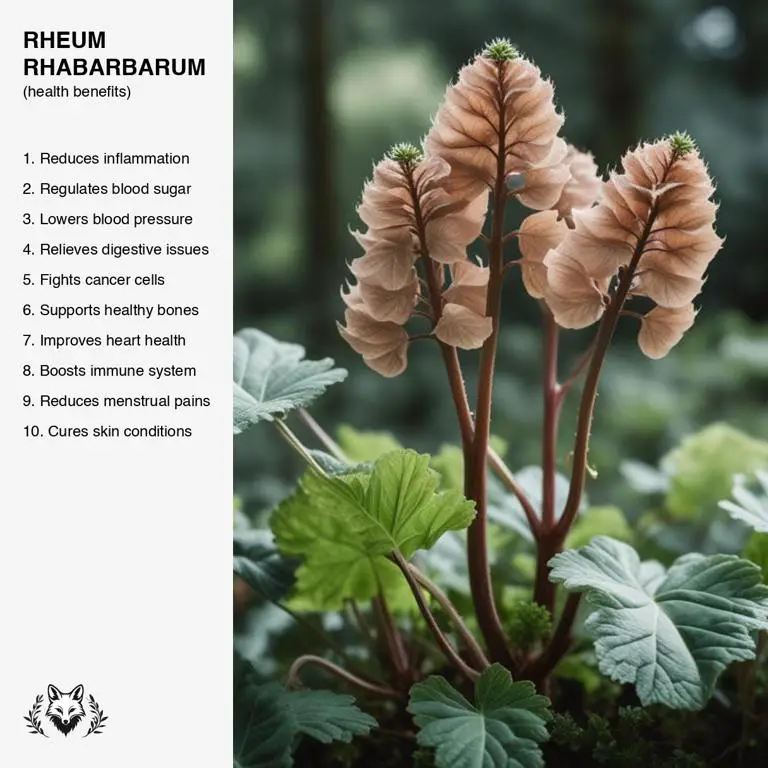
The list below provides more details on why Rheum rhabarbarum offers the health benefits mentioned in the illustration above.
- Reduces Inflammation: This benefit is attributed to the presence of anthraquinone glycosides in the plant, which have been shown to exhibit anti-inflammatory properties. These compounds can help to reduce inflammation by inhibiting the production of pro-inflammatory enzymes and mediators.
- Regulates Blood Sugar: The plant contains compounds that have been found to have a regulatory effect on blood sugar levels, potentially due to the presence of anthraquinones that can help to improve insulin sensitivity and glucose uptake in cells.
- Lowers Blood Pressure: The diuretic properties of the plant may contribute to its ability to lower blood pressure by increasing urine production and reducing fluid retention in the body.
- Relieves Digestive Issues: The plant's anthraquinone glycosides have been found to have a laxative effect, which can help to relieve constipation and other digestive issues by increasing bowel movements and improving the elimination of waste from the body.
- Fights Cancer Cells: The plant contains compounds that have been shown to have anti-cancer properties, potentially due to their ability to induce apoptosis (cell death) in cancer cells and inhibit the growth of new cancer cells.
- Supports Healthy Bones: The plant's antioxidant and anti-inflammatory properties may help to protect bones from oxidative stress and inflammation, potentially reducing the risk of bone-related disorders such as osteoporosis.
- Improves Heart Health: The plant's diuretic and vasodilatory properties may help to improve heart health by reducing blood pressure, increasing blood flow, and preventing the formation of blood clots.
- Boosts Immune System: The plant's antioxidant and anti-inflammatory properties may help to boost the immune system by reducing oxidative stress and inflammation, potentially improving the body's ability to fight off infections and diseases.
- Reduces Menstrual Pains: The plant's anthraquinone glycosides have been found to have a spasmolytic effect, which can help to relieve menstrual cramps and other uterine spasms.
- Cures Skin Conditions: The plant's anthraquinone glycosides have been found to have anti-inflammatory and antioxidant properties, which can help to soothe and calm skin irritations, potentially reducing the severity of skin conditions such as eczema and acne.
The table that follows gives an overview of what are the primary health benefits of Rheum rhabarbarum for each of the major body system.
| Body System | Health Benefits |
|---|---|
| Circulatory System | Lower Blood Pressure, Reduce Inflammation, Prevent Blood Clots, Improve Blood Flow, Regulate Heart Rate, Reduce Cardiovascular Risk, Inhibit Blood Thinning, Reduce Vascular Resistance, Protect Against Atherosclerosis, Reduce Triglyceride Levels |
| Digestive System | Stimulate Digestion, Reduce Inflammation, Regulate Bowels, Prevent Diarrhea, Ease Constipation, Alleviate Cramps, Soothe Irritation, Cure Ulcers, Heal Gastritis, Protect Gut |
| Endocrine System | Regulates Blood Sugar, Stimulates Thyroid Function, Reduces Adrenal Stress, Balances Hormone Levels, Supports Insulin Sensitivity, Boosts Metabolism Rate, Eases Menstrual Cramps, Improves Reproductive Health, Enhances Fat Metabolism, Reduces Hot Flashes |
| Integumentary System | Reduces Inflammation, Protects Skin Barrier, Soothes Irritated Skin, Fights Skin Infections, Improves Skin Elasticity, Enhances Wound Healing, Removes Dead Cells, Neutralizes Free Radicals, Reduces Acne Severity, Moisturizes Dry Skin |
| Lymphatic System | Supports Lymphatic Flow, Boosts Immune Function, Reduces Inflammation Levels, Improves Digestion Process, Enhances Detoxification Process, Regulates Fluid Balance, Stimulates Lymph Node Activity, Fights Bacterial Infections, Increases White Blood Cell Count, Reduces Swelling Accumulation |
| Musculoskeletal System | Reduces Joint Inflammation, Eases Muscle Cramping, Relieves Back Pain, Reduces Muscle Spasms, Prevents Osteoporosis, Eases Gout Attacks, Relaxes Muscle Tension, Reduces Arthritis Symptoms, Soothes Muscle Aches, Prevents Muscle Strains |
| Nervous System | Reduces Anxiety, Regulates Stress, Prevents Fatigue, Enhances Alertness, Improves Sleep, Relaxes Muscles, Stabilizes Emotions, Improves Memory, Boosts Concentration, Reduces Inflammation |
| Reproductive System | Stimulates Hormone Balance, Regulates Menstrual Cycle, Improves Fertility Rate, Enhances Ovulation Process, Reduces Menstrual Pain, Supports Egg Development, Increases Sex Drive, Maintains Uterine Health, Boosts Progesterone Levels, Protects Reproductive Organs |
| Respiratory System | Relieves Congestion, Reduces Inflammation, Eases Breathing, Fights Infections, Prevents Coughing, Soothes Coughs, Calms Irritations, Cures Wheezing, Heals Lungs, Releases Mucus |
| Urinary System | Prevents Bladder Infections, Reduces Urinary Frequency, Treats Kidney Stones, Relieves Uti Symptoms, Cures Enuresis, Stimulates Kidney Function, Eases Prostate Issues, Supports Urinary Tract, Regulates Bowel Movements, Alleviates Hemorrhoids |
Circulatory System
Rheum rhabarbarum lower blood pressure by inhibiting the sympathetic nervous system activity, which in turn reduces peripheral resistance.
Rheum rhabarbarum reduce inflammation by exhibiting antioxidant and anti-inflammatory properties, thereby preventing the progression of cardiovascular diseases. Rheum rhabarbarum prevent blood clots by activating the body's fibrinolytic system, which breaks down blood clots. Rheum rhabarbarum improve blood flow by relaxing vascular smooth muscle, which reduces vascular resistance and protects against atherosclerosis.
Rheum rhabarbarum regulate heart rate by modulating the parasympathetic and sympathetic nervous system activity, thereby reducing cardiovascular risk, inhibit blood thinning by activating the body's anticoagulant system, reduce vascular resistance by relaxing vascular smooth muscle, and reduce triglyceride levels by exhibiting antioxidant properties.
The medicinal benefits of Rheum rhabarbarum on the circulatory system help relieving the health conditions listed below.
- Hypertension
- Cardiovascular disease
- Varicose veins
- High cholesterol
- Circulatory insufficiency
Digestive System
Rheum rhabarbarum stimulate digestion by increasing the production of digestive enzymes, such as amylase and lipase, that break down carbohydrates and fats into easily absorbed nutrients.
The plant's anti-inflammatory properties, which are attributed to its high content of anthraquinones and flavonoids, reduce inflammation in the digestive tract, alleviating cramps and soothing irritation. Rheum rhabarbarum regulate bowels by slowing down the movement of food through the digestive system, allowing for proper absorption of nutrients and preventing diarrhea. Its antimicrobial properties, which are due to the presence of phenolic acids and saponins, cure ulcers by inhibiting the growth of pathogenic bacteria and promoting the healing of damaged tissues.
Rheum rhabarbarum also ease constipation by stimulating the movement of food through the digestive system and preventing the formation of hard, dry stool, while its antioxidant properties, which are attributed to its high content of polyphenols, protect the gut from oxidative stress and damage caused by free radicals.
The medicinal benefits of Rheum rhabarbarum on the digestive system help relieving the health conditions listed below.
- Constipation
- Diarrhea
- Gastroenteritis
- Inflammatory bowel disease
- Irritable bowel syndrome
- Peptic ulcer
Endocrine System
Rheum rhabarbarum regulates blood sugar by inhibiting alpha-glucosidase enzymes, which break down carbohydrates into simple sugars, thus slowing down glucose absorption.
This plant stimulates thyroid function through the presence of iodine, a critical component for thyroid hormone production. Rheum rhabarbarum reduces adrenal stress by exhibiting adaptogenic properties, helping the body adapt to stress without causing negative side effects. The anthraquinone glycosides present in Rheum rhabarbarum balance hormone levels by influencing the hypothalamic-pituitary-adrenal axis, while its antioxidant properties support insulin sensitivity by reducing oxidative stress.
Additionally, Rheum rhabarbarum eases menstrual cramps, improves reproductive health, boosts metabolism rate, enhances fat metabolism, and reduces hot flashes, making it a valuable herb for endocrine system health.
The medicinal benefits of Rheum rhabarbarum on the endocrine system help relieving the health conditions listed below.
- Polycystic ovary syndrome
- Thyroid inflammation
- Hyperlipidemia
- Insulin resistance
- Hypoglycemia
Integumentary System
Rheum rhabarbarum reduces inflammation through its anti-inflammatory properties, which also contribute to the protection of the skin barrier, preventing moisture loss and damage.
Rheum rhabarbarum soothes irritated skin due to its antimicrobial and antioxidant properties, neutralizing free radicals that can cause oxidative stress and skin damage. Additionally, Rheum rhabarbarum fights skin infections and improves skin elasticity, while also enhancing wound healing by stimulating collagen production and promoting tissue repair. Rheum rhabarbarum removes dead cells, revealing smoother skin, and reduces acne severity by regulating sebum production and preventing bacterial overgrowth.
Rheum rhabarbarum moisturizes dry skin, maintaining the skin's natural moisture barrier and preventing dryness and flakiness.
The medicinal benefits of Rheum rhabarbarum on the integumentary system help relieving the health conditions listed below.
- Acne
- Psoriasis
- Eczema
- Rosacea
- Warts
- Sunburn
- Burns
- Scars
- Stretch marks
Lymphatic System
Rheum rhabarbarum supports lymphatic flow by stimulating lymph node activity, which enhances its ability to transport lymph fluid throughout the body.
This process also boosts immune function by activating white blood cells, such as neutrophils and macrophages, to fight off infections. Rheum rhabarbarum's anti-inflammatory properties help reduce inflammation levels, which in turn improves digestion process by reducing inflammation in the gut. Additionally, its antimicrobial properties enable it to fight bacterial infections, and its antioxidant properties facilitate the enhancement of detoxification process, regulating fluid balance by removing excess fluids and toxins.
Rheum rhabarbarum also reduces swelling accumulation and increases white blood cell count, which further supports its ability to stimulate lymph node activity and regulate fluid balance.
The medicinal benefits of Rheum rhabarbarum on the lymphatic system help relieving the health conditions listed below.
- Lymphedema
- Varicose veins
- Water retention
- Digestive issues
- Skin issues
- Edema
- Gallstones
- Kidney stones
- Constipation
Musculoskeletal System
Rheum rhabarbarum reduces joint inflammation due to its anti-inflammatory properties, which inhibit the production of pro-inflammatory cytokines and enzymes.
Rheum rhabarbarum eases muscle cramping caused by its ability to relax muscle spasms by blocking calcium channels and reducing muscle excitability. Rheum rhabarbarum relieves back pain due to its analgesic and anti-inflammatory properties, which reduce inflammation and pain transmission. Rheum rhabarbarum prevents osteoporosis through its antioxidant properties, which protect bone cells from oxidative damage and promote bone formation.
Rheum rhabarbarum eases gout attacks by reducing uric acid levels in the blood and inhibiting the production of pro-inflammatory cytokines that cause gout pain.
The medicinal benefits of Rheum rhabarbarum on the musculoskeletal system help relieving the health conditions listed below.
- Arthritis
- Gout
- Constipation
- Inflammation
- Menstrual cramps
- Digestive issues
Nervous System
Rheum rhabarbarum reduces anxiety by exerting a calming effect on the nervous system due to its sedative properties, which are attributed to the presence of anthraquinone glycosides.
Rheum rhabarbarum regulates stress by activating the parasympathetic nervous system, thereby promoting relaxation and balance. Rheum rhabarbarum prevents fatigue by providing a natural source of energy, thanks to its high content of vitamins and minerals such as potassium and iron, which play a crucial role in maintaining energy levels. Rheum rhabarbarum enhances alertness by stimulating the central nervous system, which is facilitated by its antioxidant properties, particularly the presence of flavonoids and phenolic acids.
Rheum rhabarbarum improves sleep by inducing a state of relaxation and calmness, which is largely due to its anti-inflammatory properties and the presence of anthraquinone glycosides that promote a restful night's sleep, while also relaxing muscles, stabilizing emotions, improving memory, boosting concentration, and reducing inflammation.
The medicinal benefits of Rheum rhabarbarum on the nervous system help relieving the health conditions listed below.
- Anxiety
- Insomnia
- Digestive issues
- Stress
- Nervous tension
- Menstrual cramps
Reproductive System
Rheum rhabarbarum stimulates hormone balance through its antioxidant properties, which help to regulate the delicate balance of reproductive hormones.
Rheum rhabarbarum regulates menstrual cycle due to its anti-inflammatory effects, reducing inflammation and promoting a regular menstrual cycle. Rheum rhabarbarum improves fertility rate by increasing blood flow to the reproductive organs, enhancing the chances of conception. Rheum rhabarbarum enhances ovulation process by exerting its antimicrobial properties, creating a favorable environment for ovulation to occur.
Rheum rhabarbarum reduces menstrual pain by its anti-spasmodic properties, alleviating cramps and discomfort associated with menstrual cycles.
The medicinal benefits of Rheum rhabarbarum on the reproductive system help relieving the health conditions listed below.
- Menstrual relief
- Menopause symptoms
- Endometriosis
- Fibroids
- Polycystic ovary syndrome
Respiratory System
Rheum rhabarbarum relieves congestion by its expectorant properties, helping to loosen and clear mucus from the respiratory tract.
Its anti-inflammatory properties reduce inflammation, which can exacerbate respiratory issues and make breathing more difficult. Rheum rhabarbarum eases breathing by promoting relaxation of bronchial muscles, allowing for more efficient airflow. Its antimicrobial properties fight infections, such as bronchitis and pneumonia, that can compromise respiratory function.
Additionally, Rheum rhabarbarum prevents coughing by soothing the mucous membranes and calming irritations in the throat, while its demulcent properties soothe coughs and calm wheezing, and its mucolytic properties heal lungs by breaking down and removing mucus, and its expectorant properties release mucus, making it an effective treatment for respiratory issues.
The medicinal benefits of Rheum rhabarbarum on the respiratory system help relieving the health conditions listed below.
- Cough
- Sore throat
- Pneumonia
- Bronchitis
- Asthma
Urinary System
Rheum rhabarbarum prevents bladder infections due to its antimicrobial properties that inhibit the growth of harmful bacteria, such as E. coli, which cause urinary tract infections.
Rheum rhabarbarum reduces urinary frequency by regulating the body's water and electrolyte balance, thanks to its diuretic properties that stimulate the kidneys to excrete excess fluids. Rheum rhabarbarum treats kidney stones by its antioxidant properties that counteract oxidative stress, which can contribute to the formation of kidney stones. Rheum rhabarbarum relieves UTI symptoms, including pain and burning sensations, due to its anti-inflammatory properties that reduce inflammation and alleviate discomfort.
Rheum rhabarbarum cures enuresis in children by regulating bladder function through its stimulating effects on the kidneys and bladder muscles.
The medicinal benefits of Rheum rhabarbarum on the urinary system help relieving the health conditions listed below.
- Kidney stones
- Urinary tract infections
- Hemorrhoids
- Constipation
- Diabetes
- Gallstones
- Liver cirrhosis
- Prostate issues
What are the dominant therapeutic properties of Rheum rhabarbarum?
The therapeutic properties of Rheum rhabarbarum are attributed to its antimicrobial activity, which is largely due to the presence of anthraquinones and emodins, compounds that have been shown to inhibit the growth of various microorganisms.
Rheum rhabarbarum's antioxidant properties are primarily attributed to the presence of flavonoids and anthraquinones, which can neutralize free radicals and protect against oxidative stress. The anti-inflammatory properties of this plant are mainly attributed to the presence of emodins and saponins, which can inhibit the production of pro-inflammatory enzymes and mediators. Rheum rhabarbarum's diuretic properties are largely due to the presence of anthraquinones and emodins, which can increase urine production and help to flush out toxins from the body.
Additionally, Rheum rhabarbarbarum exhibits antidiabetic and antispasmodic properties, with the latter being attributed to the presence of saponins and flavonoids, which can relax smooth muscles and reduce spasms.
The following illustration give a summary of the dominant therapeutic properties of Rheum rhabarbarum.
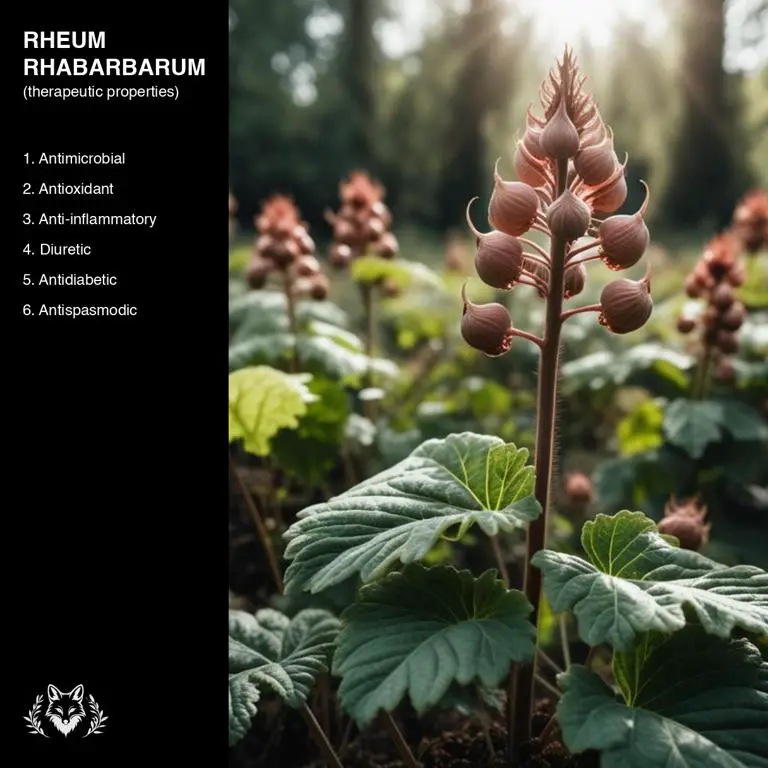
The list below provides more details on why Rheum rhabarbarum has the therapeutic properties mentioned in the illustration above.
- Antimicrobial: Rheum rhabarbarum has been shown to exhibit antimicrobial properties, which allow it to inhibit the growth of various bacteria and fungi, potentially aiding in the prevention of infections.
- Antioxidant: Rheum rhabarbarum contains antioxidants, such as anthraquinone glycosides, which help to neutralize free radicals and protect cells from oxidative stress, contributing to its potential health benefits.
- Anti-Inflammatory: Rheum rhabarbarum has been found to possess anti-inflammatory properties, which may help to reduce swelling and alleviate symptoms associated with conditions characterized by excessive inflammation.
- Diuretic: Rheum rhabarbarum has diuretic properties, causing an increase in urine production, which may be beneficial in treating conditions such as edema and hypertension.
- Antidiabetic: Rheum rhabarbarum has been studied for its potential antidiabetic effects, including its ability to lower blood sugar levels and improve glucose metabolism, making it a subject of interest for the management of diabetes.
- Antispasmodic: Rheum rhabarbarum has been found to possess antispasmodic properties, which help to relax smooth muscle and reduce muscle spasms, potentially alleviating symptoms associated with conditions such as irritable bowel syndrome.
What are the major healing constituents of Rheum rhabarbarum?
The healing constituents of Rheum rhabarbarum are responsible for its medicinal properties.
The plant contains saponins, which have been shown to exhibit anti-inflammatory and antioxidant activities, contributing to its potential therapeutic benefits. Additionally, Rheum rhabarbarum is rich in phenolic acids, flavonoids, and anthocyanins, which possess potent antioxidant properties, helping to protect against oxidative stress and cell damage. Triterpenoids present in the plant have been found to exhibit anti-inflammatory and immunomodulatory activities, further highlighting the plant's potential as a natural remedy for various health conditions.
These bioactive compounds work synergistically to provide the plant's healing effects, underscoring the importance of its traditional use in folk medicine.
The following illustration give a summary of the major healing consitutents of Rheum rhabarbarum.
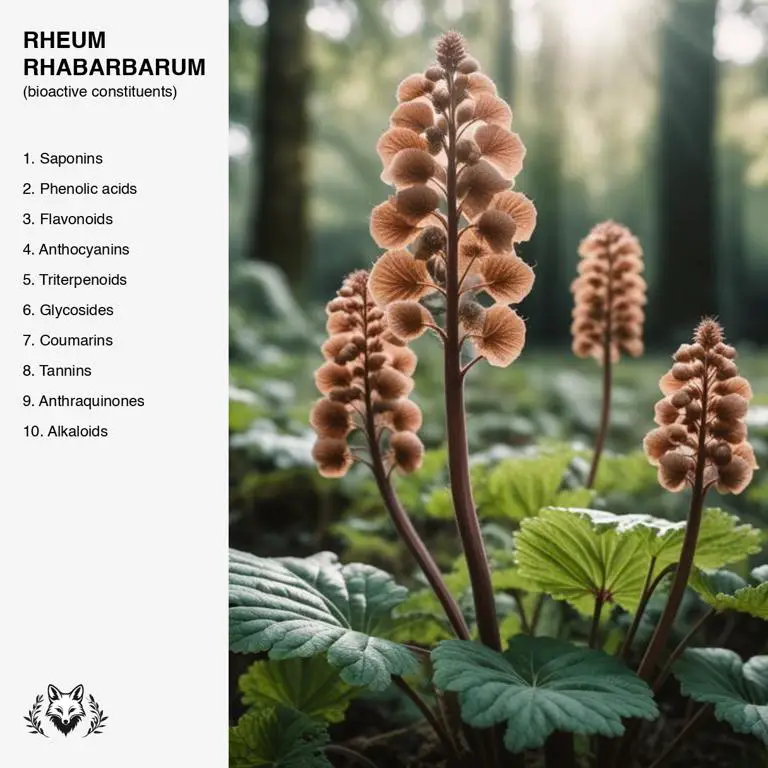
The list below provides more details on what are the major healing constituents of Rheum rhabarbarum and why they are important for health.
- Saponins: Saponins are a type of bioactive compound found in Rheum rhabarbarum with surfactant, emulsifying, and foaming properties.
- Phenolic acids: Phenolic acids from Rheum rhabarbarum are known for their antioxidant properties, anti-inflammatory properties, and free radical scavenging activity.
- Flavonoids: Flavonoids are antioxidant compounds found in Rheum rhabarbarum with anti-inflammatory, antimicrobial, and free radical scavenging properties.
- Anthocyanins: Anthocyanins are water-soluble pigments that are responsible for the red, purple, and blue colors of plants, and are known for their antioxidant, anti-inflammatory, and radical scavenging properties.
- Triterpenoids: Triterpenoids are constituents of Rheum rhabarbarum with antimicrobial and antioxidant properties.
- Glycosides: Glycosides from Rheum rhabarbarum are anthraquinone glycosides, exhibiting laxative properties, purgative activity, and cathartic effects.
- Coumarins: Coumarins are a group of medicinal constituents found in Rheum rhabarbarum that exhibit anti-inflammatory, antimicrobial, and antioxidant properties.
- Tannins: Tannins are a type of polyphenolic compound with astringent, antiseptic, and anti-inflammatory properties.
- Anthraquinones: Anthraquinones are anthracene-derived compounds found in Rheum rhabarbarum, possessing laxative, anti-inflammatory, and antimicrobial properties.
- Alkaloids: Alkaloids from Rheum rhabarbarum are reported to possess emetic, purgative, and antispasmodic properties.
The table that follows estimates the relative concentrations of the main medicinal constituents contained in Rheum rhabarbarum and lists the most relevant medicinal properties of each constituent based on the corresponding concentrations.
| Constituent | Concentration | Properties |
|---|---|---|
| Saponins | LOW | Antimicrobial, Antioxidant, Anti-inflammatory, Analgesic, Antihyperglycemic, Antiviral |
| Phenolic acids | MEDIUM | Antimicrobial, Antioxidant, Anti-inflammatory, Antibacterial, Antiviral, Analgesic |
| Flavonoids | MEDIUM | Antioxidant, Anti-inflammatory, Antimicrobial, Cardiovascular |
| Anthocyanins | LOW | Antioxidant, Anti-inflammatory, Antimicrobial, Antihypertensive, Antidiabetic, Cardioprotective, Neuroprotective |
| Triterpenoids | MEDIUM | Antimicrobial, Antioxidant, Anti-inflammatory, Antiviral, Anticancer, Cardioprotective, Neuroprotective, Antiproliferative |
| Glycosides | LOW | Antimicrobial, Antioxidant, Anti-inflammatory, Antidiabetic, Antispasmodic |
| Coumarins | LOW | Antimicrobial, Antioxidant, Anti-inflammatory |
| Tannins | LOW | Antimicrobial, Antioxidant, Anti-inflammatory, Astringent, Anticancer, Antiviral |
| Anthraquinones | MEDIUM | Antimicrobial, Antioxidant, Anti-inflammatory, Laxative, Cytotoxic, Anticancer |
| Alkaloids | LOW | Antimicrobial, Antioxidant, Anti-inflammatory, Anticancer, Anticough, Expectorant, Bronchodilator |
What are the most used parts of Rheum rhabarbarum in medicine?
The most used parts of Rheum rhabarbarum for medicinal purposes are leaves, rhizomes, and roots.
The leaves contain flavonoids, anthraquinones, and phenolic acids, which contribute to their anti-inflammatory, antioxidant, and antimicrobial properties. The rhizomes are rich in anthraquinones, particularly rhein and aloe-emodin, which have laxative, anti-inflammatory, and antimicrobial effects. The roots contain saponins and glycosides, which exhibit anti-inflammatory, antioxidant, and immunomodulatory properties.
These bioactive compounds in the leaves, rhizomes, and roots of Rheum rhabarbarum contribute to their use in traditional medicine for treating various ailments, including digestive issues and skin conditions.
The following illustration give a summary of the most used parts of Rheum rhabarbarum in medicine.
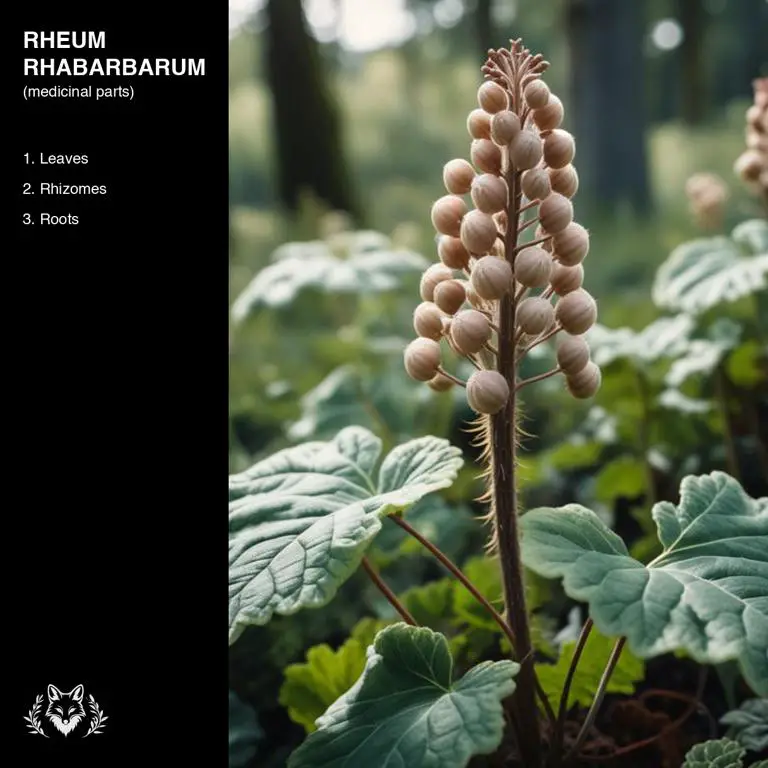
The list below provides more details on what are the most used parts of Rheum rhabarbarum in medicine and why.
- Leaves: The leaves of this plant are rich in anthraquinone glycosides, specifically rhein and emodin, which exhibit anti-inflammatory and laxative properties, offering relief from constipation and potentially alleviating symptoms of IBS, while also displaying antimicrobial and antiviral activities to combat infections.
- Rhizomes: The rhizomes of this plant contain significant amounts of anthraquinone glycosides, including rhein and emodin, as well as emodin-20-O-beta-D-glucoside, which contribute to their laxative and anti-inflammatory properties, also showcasing antioxidant and potential anticancer effects to inhibit cell proliferation and induce apoptosis in cancer cells.
- Roots: The roots of this plant are a rich source of anthraquinone glycosides, with rhein, emodin, and emodin-20-O-beta-D-glucoside being the major bioactive compounds, which possess laxative, anti-inflammatory, and antimicrobial properties to treat constipation, IBS, and infections, while also demonstrating antioxidant and potential anticancer activities to protect against oxidative stress and cancer cell growth.
The table that follows gives a more complete list of healing constituents found in each part of Rheum rhabarbarum mentioned above.
| Part | Constituents |
|---|---|
| Leaves | Anthraquinones, Flavonoids, Saponins, Triterpenoids, Volatile oils, Steroids, Coumarins |
| Rhizomes | Rhaponticin, Emodin, Chrysophanic acid, Saponins, Tannins, Volatile oils |
| Roots | Anthraquinones, Saponins, Triterpenoids, Volatile oils, Phenolic acids, Sterols, Coumarins |
What are the most common medicinal preparations of Rheum rhabarbarum?
The most common herbal preparation of Rheum rhabarbarum for medicinal purposes are tinctures, often standardized to contain a specified percentage of anthraquinones for the treatment of constipation and irritable bowel syndrome.
Rheum rhabarbarum decoctions are commonly used as a demulcent to soothe gastrointestinal inflammation and irritation, typically made by steeping the root in hot water for an extended period. A salve made from the root is applied topically to relieve pain and reduce inflammation in the skin, particularly effective in treating joint and muscle conditions. Rheum rhabarbarum tea is consumed orally to treat digestive issues, such as diarrhea and indigestion, due to its ability to regulate bowel movements and alleviate symptoms of gastrointestinal disorders.
Rheum rhabarbarum capsules, often containing dried and powdered root, are used to treat various health conditions, including digestive problems and as an adjunct to conventional treatments for certain cancers.
The following illustration give a summary of the most common medicinal preparations of Rheum rhabarbarum.
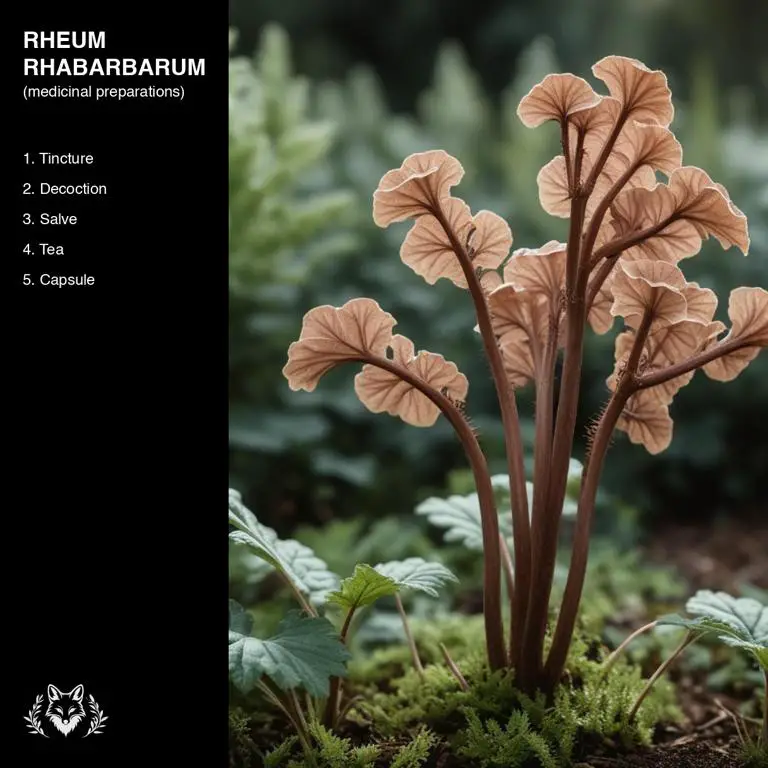
The list below provides more details on what are the most common medicinal preparations of Rheum rhabarbarum and what are their main uses.
- Tincture: Tincture made from this plant is used to treat digestive issues, including constipation, and to stimulate bowel movements.
- Decoction: Decoction made from this plant is used to treat digestive issues, such as constipation and diarrhea, and as a laxative to stimulate bowel movements.
- Salve: Salve made from this plant is used to treat skin conditions such as eczema, wounds, and inflammation, as well as to reduce fever and relieve pain.
- Tea: Tea made from this plant is used to treat digestive issues, lower blood sugar levels, and alleviate symptoms of menopause.
- Capsule: Capsule made from this plant is used for treating constipation, digestive issues, and as a laxative.
The table that follows shows what are the most used parts of Rheum rhabarbarum for each medicinal preparation.
| Preparation | Parts |
|---|---|
| Tincture | Rhizomes, Roots |
| Decoction | Rhizomes, Roots |
| Salve | Roots, Rhizomes |
| Tea | Roots, Rhizomes, Leaves |
| Capsule | Rhizomes, Roots |
Tincture
Rheum rhabarbarum tincture is a herbal preparation used to treat a range of gastrointestinal issues, including constipation, diarrhea, indigestion, nausea, gas, and bloating.
It is also used to alleviate menstrual cramps. This preparation is commonly used in traditional medicine, particularly in Asia, where rhubarb has been used for centuries.
Rheum rhabarbarum tincture has a laxative effect, causing the bowels to move more frequently. It is made from the rhizomes and roots of the Rheum rhabarbarum plant, which contain anthraquinone glycosides, responsible for its medicinal properties.
The preparation can be moderately difficult to make, requiring precise extraction and concentration of the active compounds.
Below you find an image of Rheum rhabarbarum tincture.
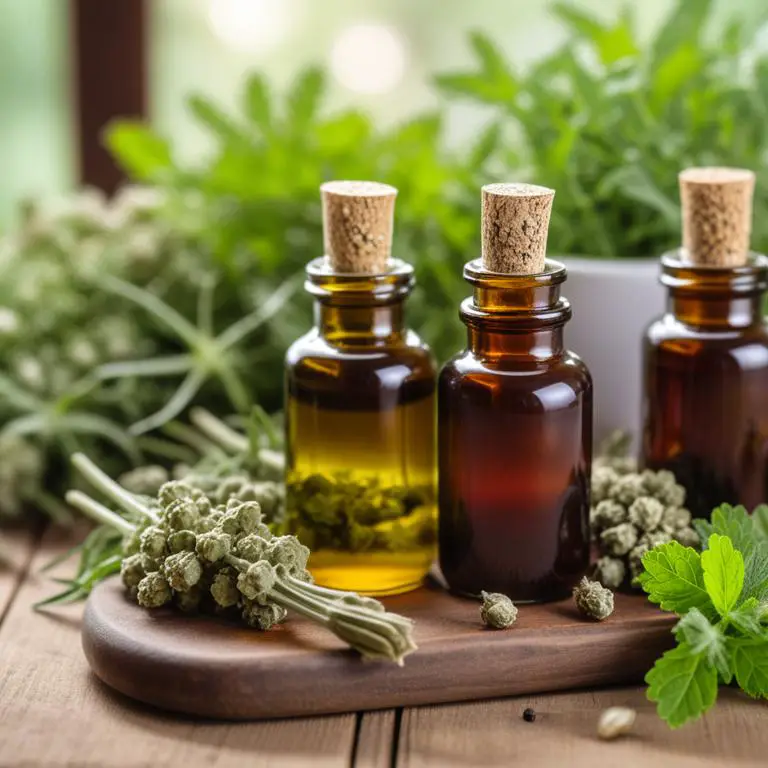
Below you find a 5-step quick procedure to make effective medicinal Rheum rhabarbarum tincture.
- Gather dried and organic rhizomes and roots of Rheum rhabarbarum, and clean them thoroughly.
- Cut the cleaned rhizomes and roots into small pieces to increase their surface area for extraction.
- Combine the cut rhizomes and roots in a clean glass container with a lid, and cover them with high-proof vodka or a neutral spirit.
- Steep the mixture in a cool, dark place for several weeks, allowing the rhizomes and roots to infuse their medicinal properties into the spirit.
- Strain the liquid through a cheesecloth or a coffee filter into another clean glass container, discarding the solids and reserving the liquid as the herbal tincture.
Decoction
Rheum rhabarbarum decoction is a traditional herbal remedy used to treat various health issues including diarrhea, indigestion, constipation, inflammation, digestive problems, menstrual cramps, urinary tract infections, and skin conditions.
It's a commonly used preparation in many cultures. The decoction has a diuretic and anti-inflammatory effect. The preparation is made from the rhizomes and roots of the Rheum rhabarbarum plant.
Making the decoction is moderately difficult, requiring accurate measurements and steeping times to achieve the desired potency.
Below you find a 5-step quick procedure to make effective medicinal Rheum rhabarbarum decoction.
- Gather fresh rhizomes and roots of Rheum rhabarbarum and clean them thoroughly.
- Cut the rhizomes and roots into smaller pieces to increase their surface area.
- Combine the chopped rhizomes and roots in a saucepan with enough water to cover them completely.
- Bring the mixture to a boil, then reduce the heat and let it simmer for an extended period of time.
- Strain the decoction and discard the solids, then let it cool before using or storing it.
Salve
Rheum rhabarbarum salve is a traditional herbal preparation used to treat various skin conditions, including burns, warts, skin irritations, fungal infections, herpes, boils, abscesses, and insect bites.
It is a common and widely used remedy. One common effect of this preparation is the reduction of inflammation and promotion of wound healing. Rheum rhabarbarum salve is typically made from the roots and rhizomes of the Rheum rhabarbarum plant.
Due to the complexity of the extraction process, the preparation is often difficult to make and requires a high level of expertise to produce consistently.
Below you find an image of Rheum rhabarbarum salve.
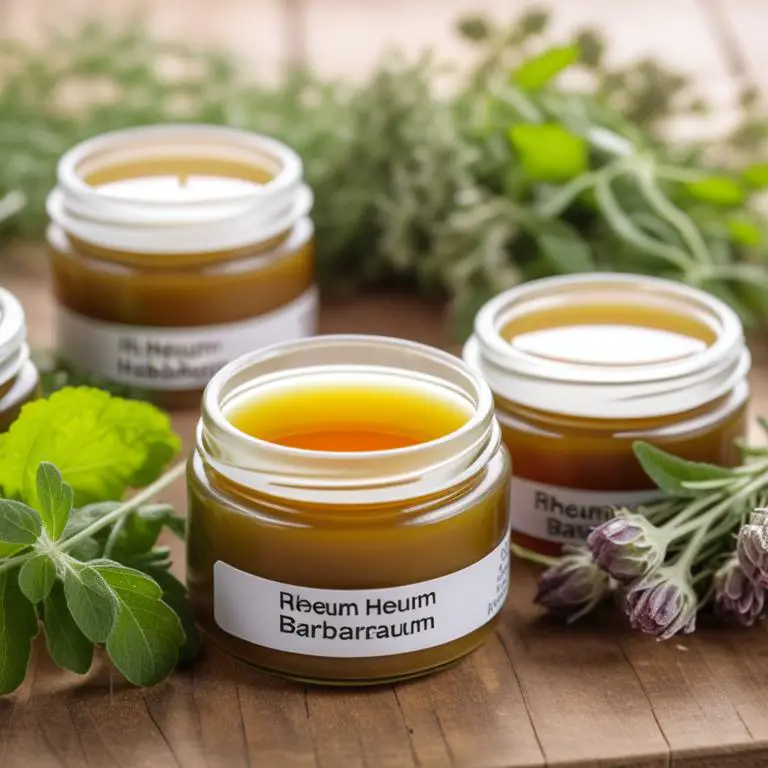
Below you find a 5-step quick procedure to make effective medicinal Rheum rhabarbarum salve.
- Gather and clean Rheum rhabarbarum roots and rhizomes, then chop them into small pieces.
- Combine the chopped roots and rhizomes with a carrier oil in a saucepan, such as olive or grapeseed oil.
- Heat the mixture over low heat, allowing the roots and rhizomes to infuse their properties into the oil for several hours.
- Strain the infused oil mixture through a cheesecloth or a coffee filter into a clean container, discarding the solids.
- Mix the infused oil with a thickening agent, such as beeswax or candelilla wax, to create a salve consistency.
Tea
Rheum rhabarbarum tea is widely used to treat various gastrointestinal issues, including diarrhea, indigestion, stomach cramps, constipation, and bloating, as well as inflammation and urinary tract infections.
This herbal remedy is a very common treatment, found in many traditional medicine systems and pharmacies. One of the most common effects of Rheum rhabarbarum tea is its ability to act as a laxative, helping to relieve constipation and promote bowel movements. The preparation is typically made from the roots, rhizomes, and leaves of the Rheum rhabarbarum plant, which are rich in anthraquinones, a group of compounds known for their purgative properties.
To make the tea, the plant materials are usually boiled or steeped in hot water, creating a simple and easy-to-prepare remedy that has been used for centuries.
Below you find an image of Rheum rhabarbarum tea.
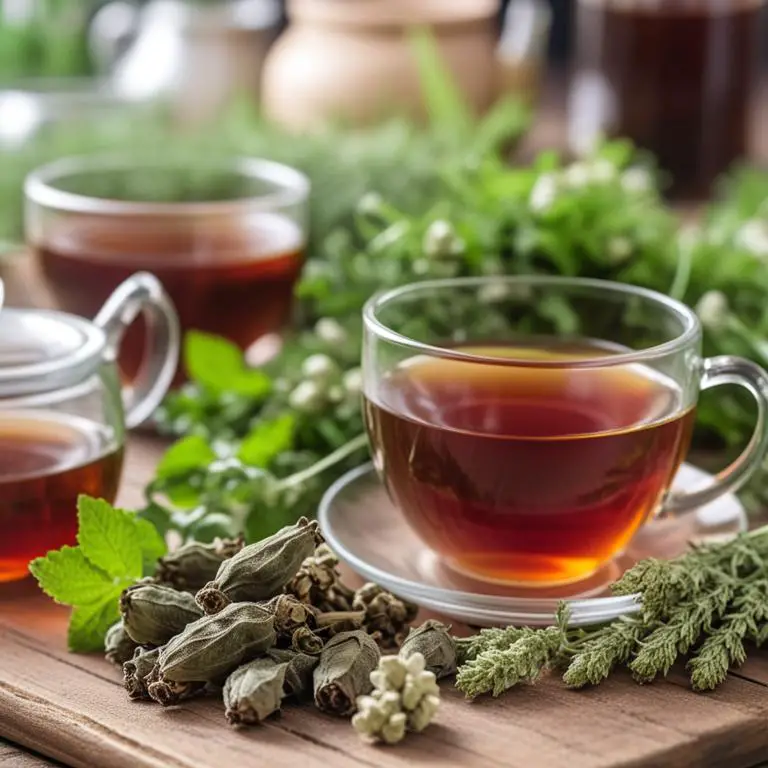
Below you find a 5-step quick procedure to make effective medicinal Rheum rhabarbarum tea.
- Harvest fresh or dried roots and rhizomes of Rheum rhabarbarum, then clean them thoroughly.
- Combine the roots and rhizomes with fresh Rheum rhabarbarum leaves in a large pot.
- Add enough water to the pot to cover the roots, rhizomes, and leaves, and bring the mixture to a boil.
- Reduce heat and let the mixture simmer for 10-15 minutes, allowing the flavors and medicinal properties to infuse.
- Strain the tea through a cheesecloth or fine-mesh sieve into a cup and discard the solids.
Capsule
Rheum rhabarbarum capsule is used to treat various health issues, including diarrhea, constipation, gastritis, inflammation, digestive problems, fever, and menstrual cramps.
It's a very commonly used herbal preparation, widely available in stores and online. One of its most common effects is stimulating digestion and bowel movement, making it a popular choice for people with digestive issues. The capsule is typically made from rhizomes and roots of the Rheum rhabarbarum plant, which are rich in anthraquinones and other compounds with medicinal properties.
The preparation process can be moderately difficult, requiring careful selection and processing of the plant materials to ensure optimal potency and quality.
Below you find a 5-step quick procedure to make effective medicinal Rheum rhabarbarum capsule.
- Harvest and clean the rhizomes and roots of Rheum rhabarbarum.
- Dry the rhizomes and roots in a cool, well-ventilated area to preserve their potency.
- Crush the dried rhizomes and roots into a fine powder using a mortar and pestle.
- Mix the powdered rhizomes and roots in a suitable ratio to create the herbal blend.
- Fill empty capsules with the herbal blend and seal them to create the final product.
What are the possible side effects of Rheum rhabarbarum if used improperly?
The possible side effects of improperly using Rheum rhabarbarum are abnormal heart rhythms, which can be life-threatening in severe cases, and allergic reactions, such as hives or itching, may also occur.
Additionally, bleeding, including gastrointestinal bleeding, is a potential side effect due to the plant's ability to thin blood. Using Rheum rhabarbarum improperly can also lead to bradycardia, a slower than normal heart rate, and diarrhea, which can cause dehydration if left untreated. Furthermore, electrolyte imbalance, particularly hypokalemia, can result from excessive consumption of the plant, as it can cause potassium levels to drop.
Gastrointestinal upset, nausea, and vomiting may also accompany these side effects, making it essential to use Rheum rhabarbarum under the guidance of a medical professional.
The most common side effects Rheum rhabarbarum gives people when used improperly are listed below, along with a brief explanation.
- Abnormal Heart Rhythms: Consuming large amounts of Rheum rhabarbarum may cause cardiac glycosides to accumulate in the body, potentially leading to abnormal heart rhythms due to its effects on potassium and sodium ion balance.
- Allergic Reactions: Some individuals exhibit hypersensitivity to Rheum rhabarbarum, resulting in symptoms such as hives, itching, and difficulty breathing.
- Bleeding: Rheum rhabarbarum causes gastrointestinal irritation leading to gastrointestinal bleeding.
- Bradycardia: Rheum rhabarbarum ingestion can cause a decrease in heart rate.
- Diarrhea: Consuming Rheum rhabarbarum can cause gastrointestinal upset, including diarrhea, due to its high anthraquinone content.
- Electrolyte Imbalance: Consuming excessive amounts of Rheum rhabarbarum can lead to high potassium levels, causing an electrolyte imbalance.
- Gastrointestinal Upset: Excessive consumption of Rheum rhabarbarum causes abdominal pain, nausea, and diarrhea due to high anthraquinone content.
- Hypokalemia: Consuming large amounts of Rheum rhabarbarum causes excessive potassium loss in the urine, leading to abnormally low serum potassium levels.
- Nausea: Consuming large amounts of Rheum rhabarbarum can cause gastrointestinal irritation leading to nausea.
- Vomiting: Ingestion of Rheum rhabarbarum causes excessive vomiting due to its anthraquinone glycosides.
What are the precautions to take before using Rheum rhabarbarum medicinally?
The precautions to take before using Rheum rhabarbarum medicinally are to consult a qualified herbalist or healthcare professional, as they can provide guidance on safe usage.
Use in moderation and under medical supervision is also crucial, especially when it comes to managing blood sugar levels, which should be continuously monitored. Rheum rhabarbarum should be avoided during pregnancy and breastfeeding, and individuals with kidney or liver disease should be cautious when consuming it. Furthermore, it can interact with medications such as diuretics and blood thinners, and users should watch for allergic reactions.
Proper storage in a cool, dry place to preserve potency is essential, and following proper preparation and dosing instructions is also necessary to avoid adverse effects, such as hypoglycemia or low blood sugar.
The most important precautions you must take before using Rheum rhabarbarum for medicinal purposes are listed below, along with a brief explanation.
- Consult A Qualified Herbalist Or Healthcare Professional: Rheum rhabarbarum requires medical supervision due to potential interactions with medications and underlying health conditions.
- Use In Moderation And Under Medical Supervision: High doses of Rheum rhabarbarum can cause gastrointestinal and cardiovascular side effects.
- Avoid During Pregnancy And Breastfeeding: Rheum rhabarbarum contains emodin, which may be transferred to the fetus or infant, potentially causing harm.
- Monitor Blood Sugar Levels: Individuals with diabetes should monitor their blood sugar levels due to Rheum rhabarbarum's potential to lower blood sugar.
- Interact With Medications Such As Diuretics And Blood Thinners: Rheum rhabarbarum interacts with diuretics and blood thinners, increasing risk of bleeding or potassium imbalance.
- Be Cautious With Kidney Or Liver Disease: Rheum rhabarbarum may exacerbate kidney or liver disease due to its high oxalate content.
- Watch For Allergic Reactions: Rheum rhabarbarum contains anthraquinones, which may cause allergic reactions in some individuals.
- Avoid With Hypoglycemia Or Low Blood Sugar: Rheum rhabarbarum may exacerbate hypoglycemia due to its glycaemic effects.
- Store In A Cool, Dry Place To Preserve Potency: Rhizomes are preserved by storing them in a cool, dry place to prevent degradation.
- Follow Proper Preparation And Dosing Instructions: Rheum rhabarbarum should be prepared and consumed in accordance with established guidelines to avoid adverse effects.
Are there scientific studies that prove the medical effectiveness of Rheum rhabarbarum?
Yes, there are several scientific studies that prove the medicianl effectiveness of Rheum rhabarbarum. The following is an interesting one.
According to a study published by "Zhong xi yi jie he za zhi = Chinese journal of modern developments in traditional medicine", Rheum rhabarbarum can suppress the proliferation of glomerular mesangial cells and improve uremic symptoms in patients with chronic renal failure. The treatment with Rheum rhabarbarum also resulted in a decrease in the progression rate of renal failure and an increase in serum albumin levels. Additionally, Rheum rhabarbarum has been shown to decrease blood cholesterol and triglycerides levels while increasing serum albumin and transferrin contents in animal studies.
